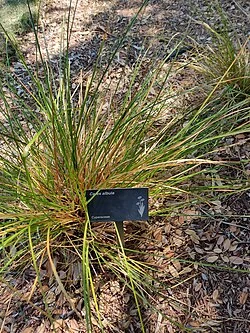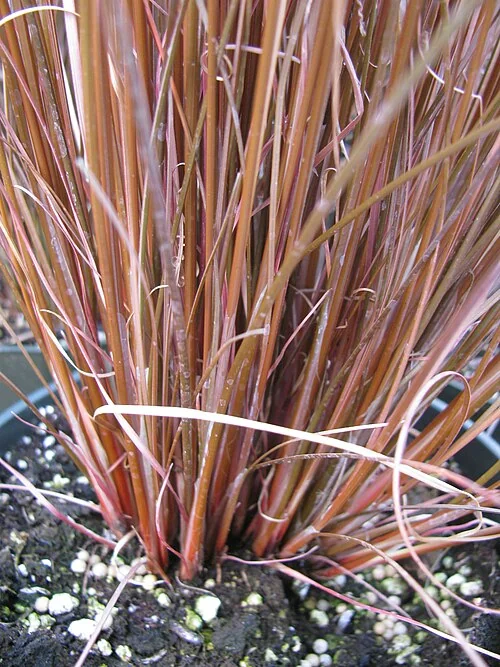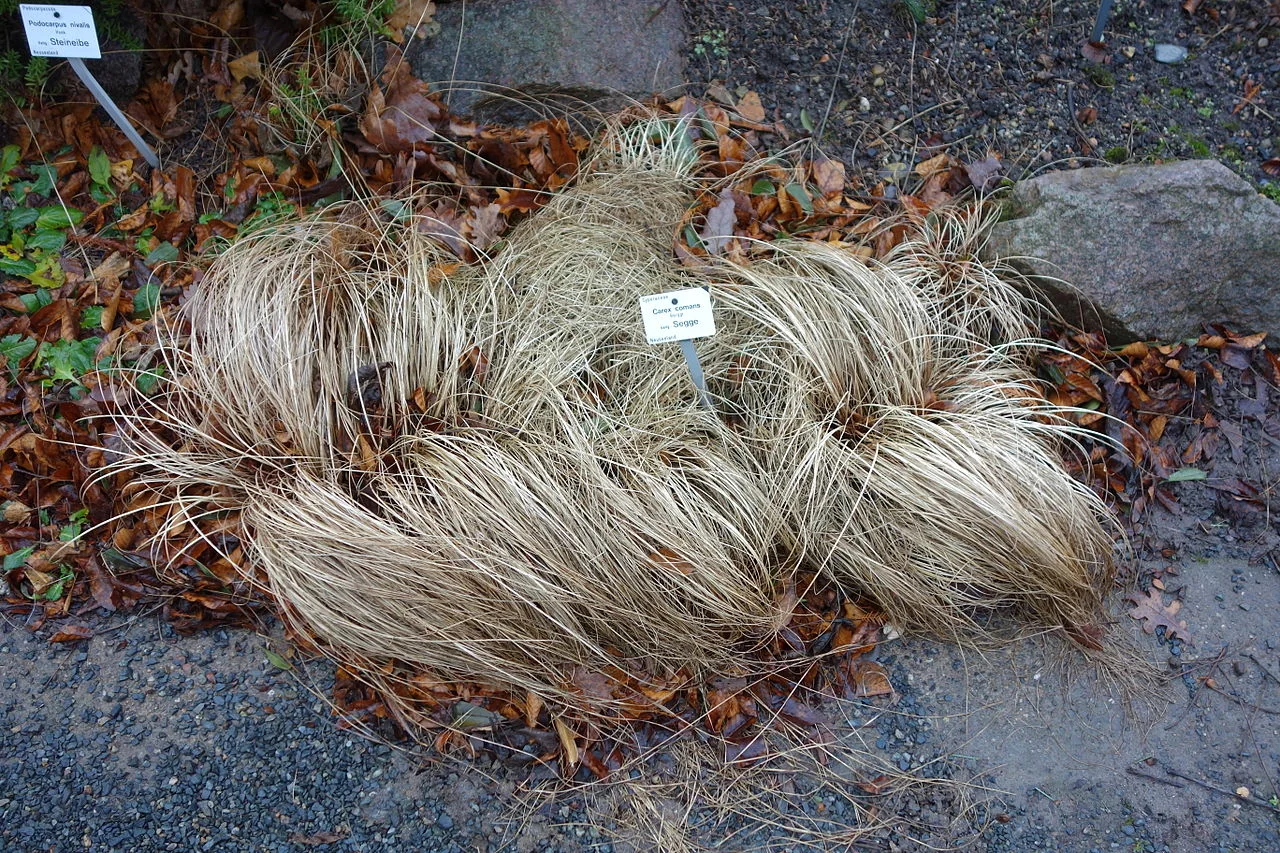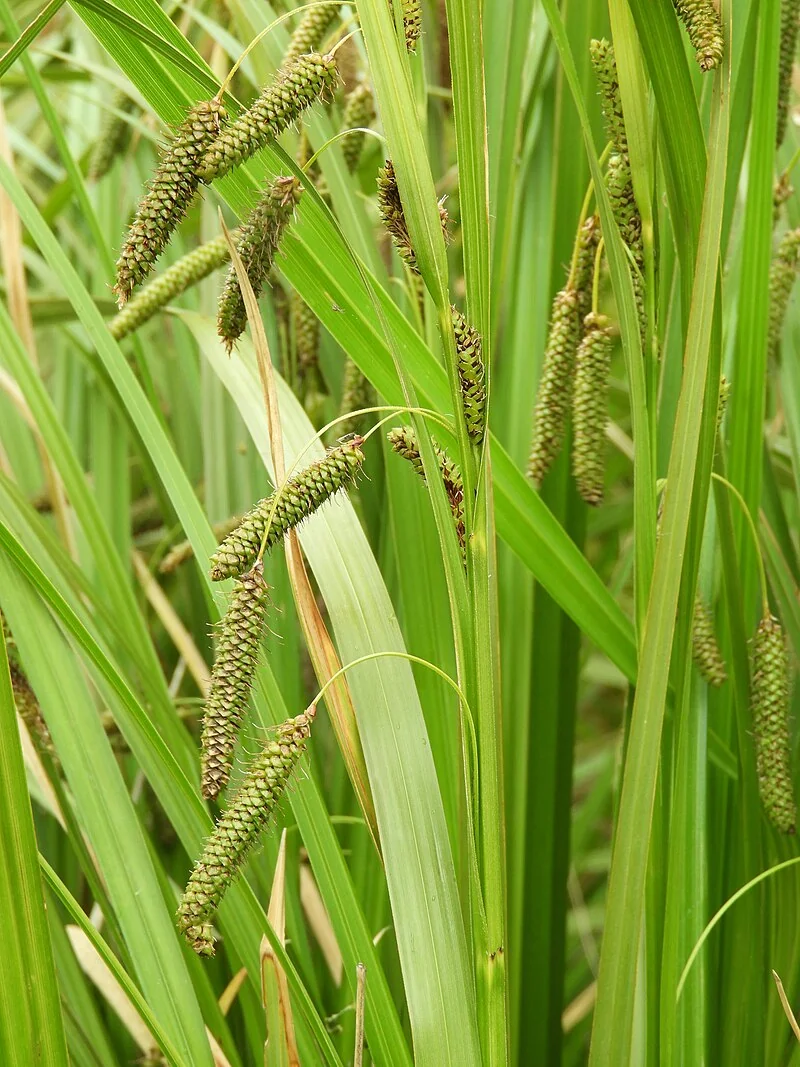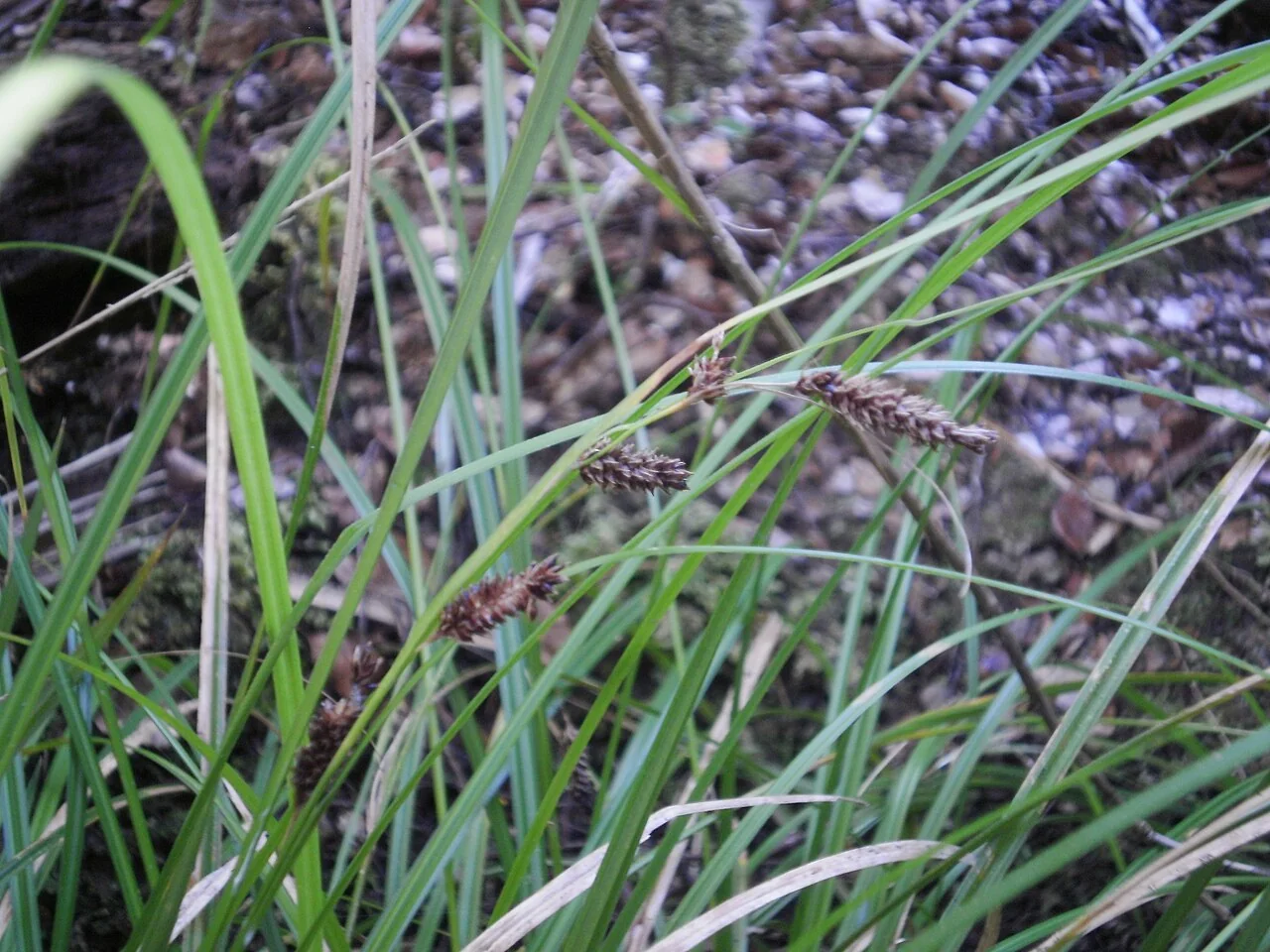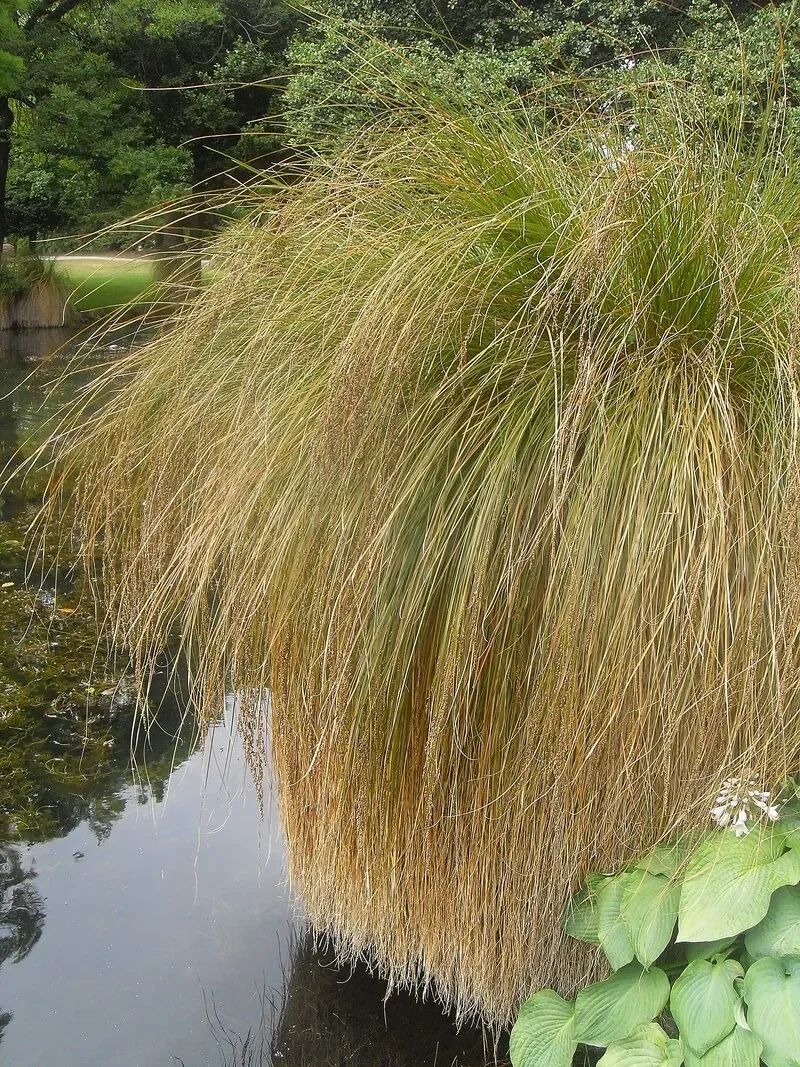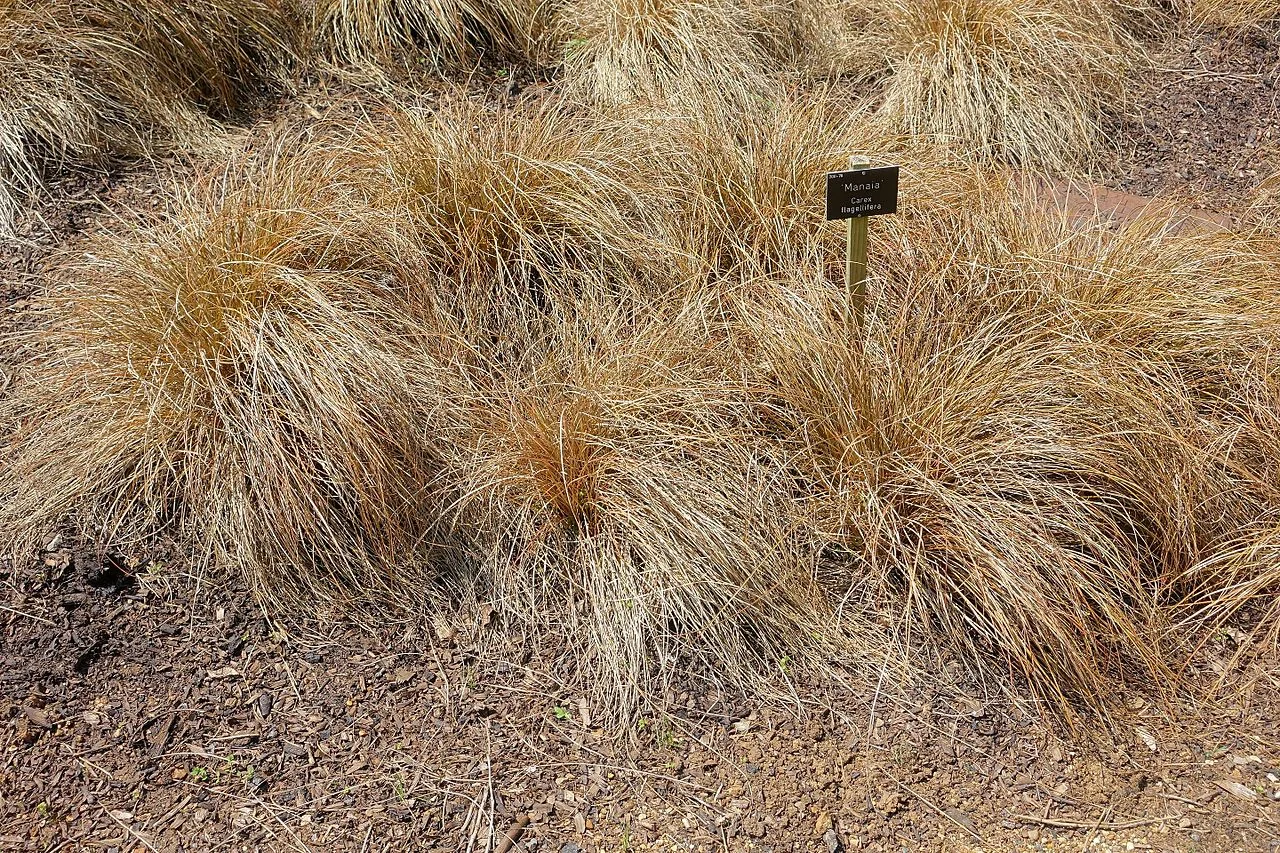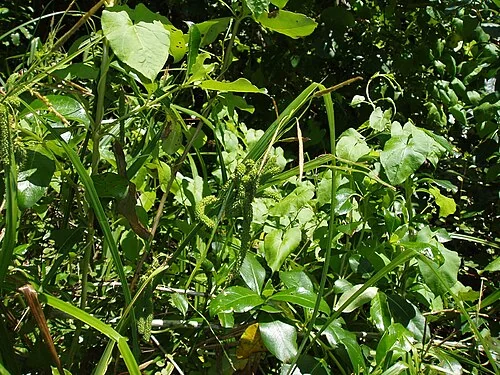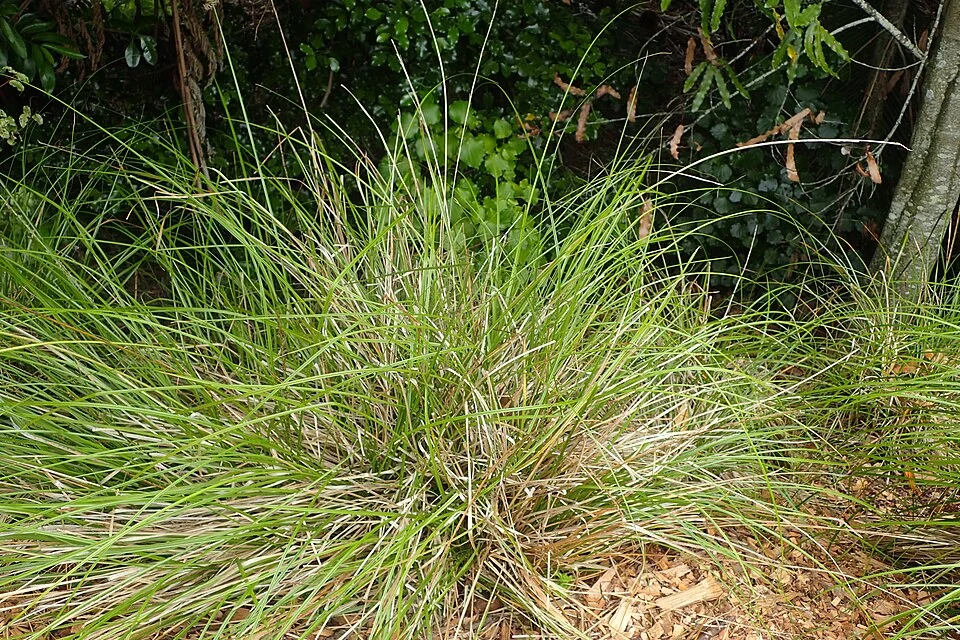
Swamp Sedge
Carex virgata
Carex virgata , commonly known as Swamp Sedge, Pūkio, or Cutty Grass, is a robust native New Zealand sedge that forms dense clumps of bright green, arching leaves reaching up to 90cm in height. This hardy, evergreen perennial demonstrates remarkable adaptability across New Zealand's diverse climate zones, thriving in conditions ranging from swampy wetlands to periodically dry sites. Indigenous to the North, South, Stewart, and Chatham Islands, this vigorous species is characterized by its rhizomatous growth habit and distinctive narrow panicle inflorescence that produces inconspicuous brownish flower spikes from late spring to early summer. The plant's exceptional tolerance to frost, drought, wind, and coastal conditions, combined with its dense root system that helps stabilize soil and filter runoff, makes it invaluable for wetland restoration projects and riparian plantings throughout New Zealand.

Plant Description
Carex virgata (swamp sedge) forms upright, tufted clumps with narrow, mid-green leaves and conspicuous brown flowering spikes. A vigorous wetland sedge widely used in riparian restoration and stormwater systems.
Quick Facts
| Scientific Name | Carex Virgata |
|---|---|
| Common Name | Swamp Sedge, Pūkio, Cutty Grass |
| Plant Type | Hardy, evergreen, perennial sedge |
| Height | 0.8-1.0 meter (up to 90cm) |
| Spread | 0.8-1.0 meter (clumping) |
| Leaves | Bright green, narrow, arching, 0.5-1.2 m tall, 1.5-4.5mm wide |
| Flowers | Narrow panicle, 100-260mm long, brownish spikes (late spring-summer) |
| Habitat | Wetlands, swamps, riparian zones, alluvial forests |
| Distribution | North, South, Stewart and Chatham Islands (sea level to 1000 m) |
| Conservation Status | Not Threatened |
| Water Needs | High - thrives in wet conditions, tolerates periodic drought |
| Light | Full sun to partial shade |
| Frost Tolerance | Very hardy - tolerates frost and cold climates |
| Salt Tolerance | Good - tolerates coastal conditions |
| Growth Rate | Fast - rapid establishment from seed or division |
| Lifespan | Long-lived perennial |
| Uses | Wetland restoration, erosion control, riparian planting, water treatment |
| Family | Cyperaceae (Sedge family) |
Climate Best Suited to
Temperate climates across Aotearoa with regular rainfall and cool to warm summers. Carex virgata tolerates seasonal inundation, hard frost and coastal winds, and copes with short dry spells once established if the root zone stays cool under mulch. In hotter districts, morning sun with afternoon shade helps maintain colour and density.
Regional Suitability
| City | Climate Suitability |
|---|---|
| Whangārei | Ideal |
| Auckland | Ideal |
| Hamilton | Ideal |
| Tauranga | Ideal |
| Rotorua | Ideal |
| Gisborne | Ideal |
| New Plymouth | Ideal |
| Napier | Ideal |
| Whanganui | Ideal |
| Palmerston North | Ideal |
| Wellington | Ideal |
| Nelson | Ideal |
| Christchurch | Ideal |
| Dunedin | Ideal |
| Invercargill | Ideal |
Natural Habitat
Swamps, lake margins, seasonally wet flats and streamsides from lowland to montane zones. Clumps often occupy the toe of banks and depositional flood benches where sediment accumulates after freshes. In alluvial forest remnants it can form extensive swards that filter runoff and provide safe germination sites for raupō and rushes.
Plant Conservation
Conservation Status
Carex virgata has a conservation status of "Not Threatened" under the New Zealand Threat Classification System. This reflects the species' stable populations and widespread distribution across suitable habitats throughout New Zealand's main islands and offshore territories.
Distribution and Habitat
Swamp Sedge occurs naturally on the North, South, Stewart, and Chatham Islands, ranging from sea level to approximately 1000 meters elevation. The species thrives in open, swampy conditions and damp sites within lowland forests, often dominating alluvial forest communities in parts of the country.
Ecological Importance
As a successful colonizing species, Swamp Sedge plays a crucial role in wetland ecosystem stability and restoration. Its dense root system helps prevent erosion, filters runoff to improve water quality, and provides valuable habitat for native insects and birds. The plant's ability to tolerate both wet and dry conditions makes it particularly valuable for climate-resilient ecosystem restoration.
How to Grow
Swamp Sedge (Carex virgata) is a highly adaptable and robust plant, making it relatively easy to grow in a wide range of conditions, especially those mimicking its natural wetland habitats. It is an excellent choice for revegetation, riparian planting, and ornamental use where its arching foliage and strong growth can be fully appreciated.
Planting Guide
Best Planting Practices
Set plants along swales, pond shelves and raingarden inlets where water slows. Space 0.5-0.7 m apart; plant slightly proud in heavy clays and mulch to suppress weeds.
Ecology
Excellent for bank stabilisation, nutrient uptake and habitat for aquatic invertebrates and skinks. Rhizomatous clumps stitch banks together, slowing flows and trapping sediment while providing edge cover for skinks and wading birds.
Uses
Carex virgata is invaluable for biofiltration swales, detention basins, riparian buffers, and creating naturalistic wet meadow drifts. It excels in erosion control along waterways, provides visual continuity in large parkland or infrastructure plantings, and contributes significantly to stormwater management and water quality improvement due to its robust root system.
Landscaping Ideas
Combine with Carex secta , Juncus spp. and Phormium tenax for layered wetland edges; repeat in sweeps to guide water and create strong sightlines.
Seasonal Care
Autumn
Cut seed stems if self-sowing is unwanted; remove lodged foliage around inlets to maintain flow.
Winter
Top-dress poor sites with compost and ensure mulch is clear of crowns to keep them aerated.
Pruning
Pruning Techniques
Groom once a year in late winter by combing or lightly shearing to remove tired leaves and spent stems; avoid cutting hard into the crown.
How to Grow Swamp Sedge
Swamp sedge excels in wet to moist soils and tolerates seasonal inundation, making it ideal for raingardens, pond edges and swales. Prepare the site by removing weeds and loosening compacted soil; in heavy clays, plant slightly proud and top-dress with coarse mulch to limit smothering. Water to settle roots and keep evenly moist during the first summer. In nutrient-rich stormwater systems, growth is rapid; trim old foliage annually to refresh clumps and maintain flow capacity.
Seed
Sow fresh, cleaned seed onto a free-draining seed-raising mix; cover lightly with fine grit and keep consistently moist. Germination is usually straightforward at cool to mild temperatures with bright light. Prick out to plugs for easy mechanised planting along riparian margins.
Division
Divide robust clumps in spring, slicing into firm, multi-shoot sections. Replant at original depth, water thoroughly, and maintain good moisture for several weeks. Division rapidly produces planting stock for large wetland projects.
After-Care
Mulch to suppress weeds, top-dress with compost where growth is poor, and cut back spent seed heads to prevent unwanted spread. Ensure plantings remain open enough to avoid blocking drains while still stabilising banks. Regular monitoring during the first year helps identify any establishment issues early. In constructed wetlands, trim back excessive growth annually to maintain proper water flow rates and prevent clogging of outlet structures.
Pests and Diseases
Common Problems and Solutions
Generally problem-free in oxygenated, moving water. Crown and root rot arise in stagnant, anaerobic conditions-improve drainage and keep crowns clear. Occasional aphids or snails cause cosmetic nibbling and rarely persist.
Cultural Significance
Traditional Uses and Values
Carex virgata , known to Māori as "Pūkio" or "Toitoi," holds cultural significance as part of New Zealand's indigenous flora. While traditional uses are not as extensively documented as for some other native species, the plant's Māori names reflect its recognition and importance within traditional ecological knowledge systems.
The species' robust nature and widespread distribution meant it was a familiar part of the landscape for early Māori communities, particularly in wetland areas where it often dominated vegetation. As with many native sedges, Pūkio may have been used for various practical purposes, though specific traditional applications require further research.
Today, Swamp Sedge represents an important component of New Zealand's natural heritage, valued for its role in contemporary conservation and restoration efforts. Its use in wetland restoration projects helps preserve traditional landscapes while supporting modern environmental management goals, ensuring this significant native species remains part of New Zealand's living cultural and ecological heritage.
Bonus Tip
Expert Growing Advice
For raingardens, interplant with a few taller clumps of Carex secta to create flow baffles and improve treatment while adding vertical rhythm.
